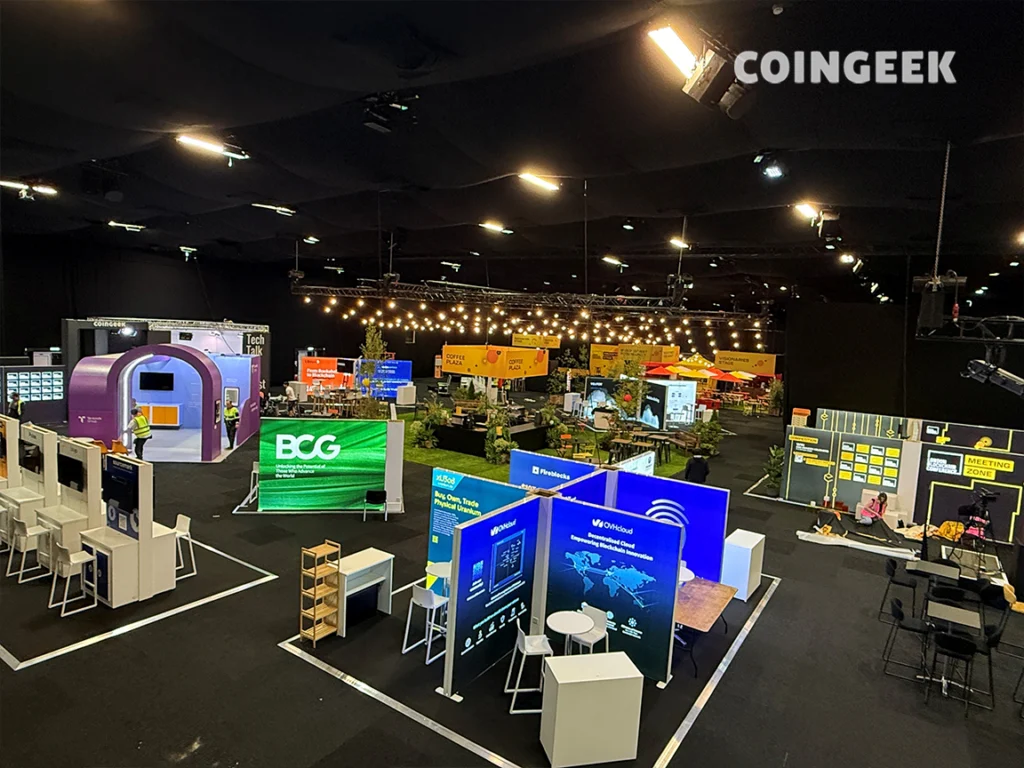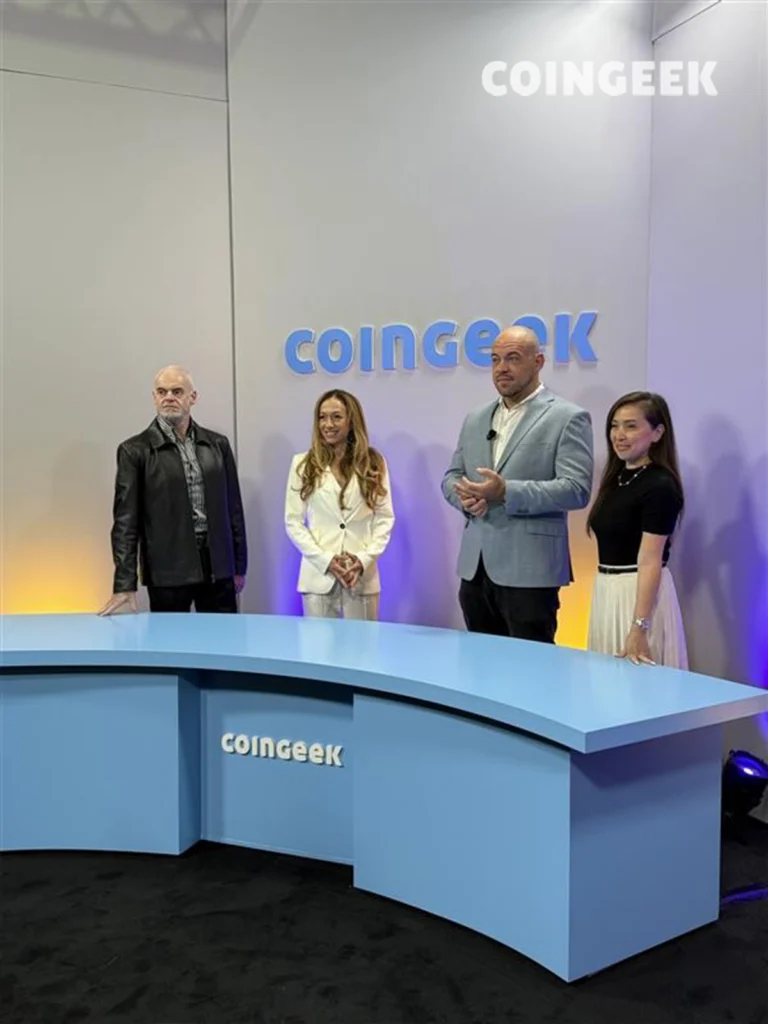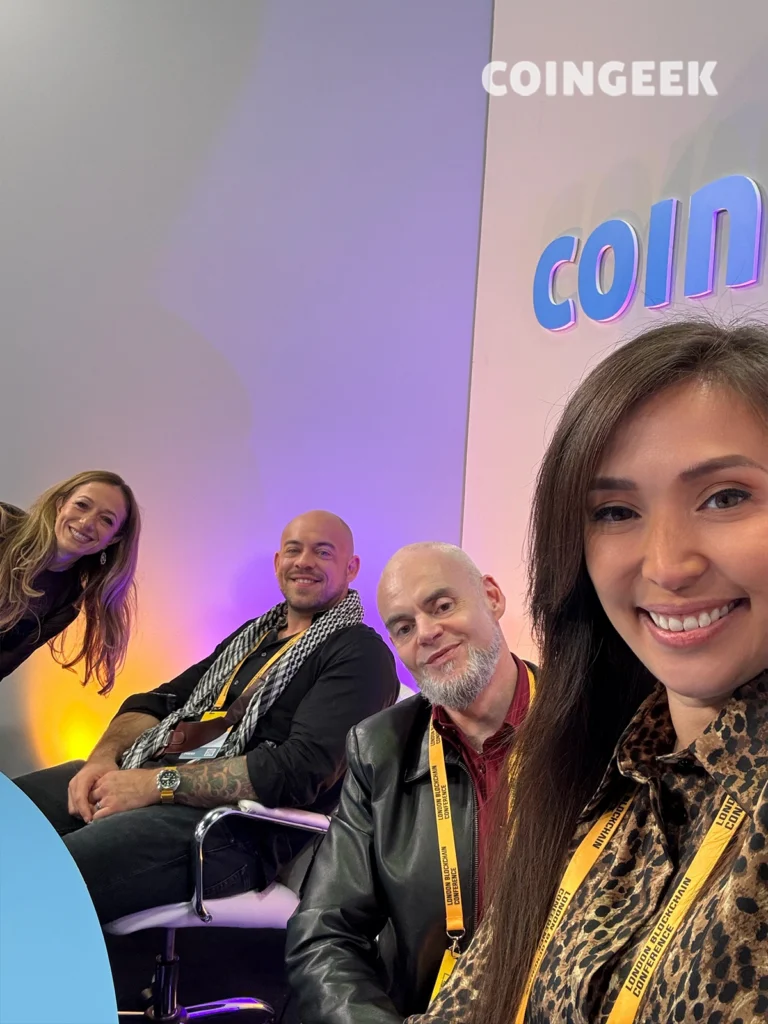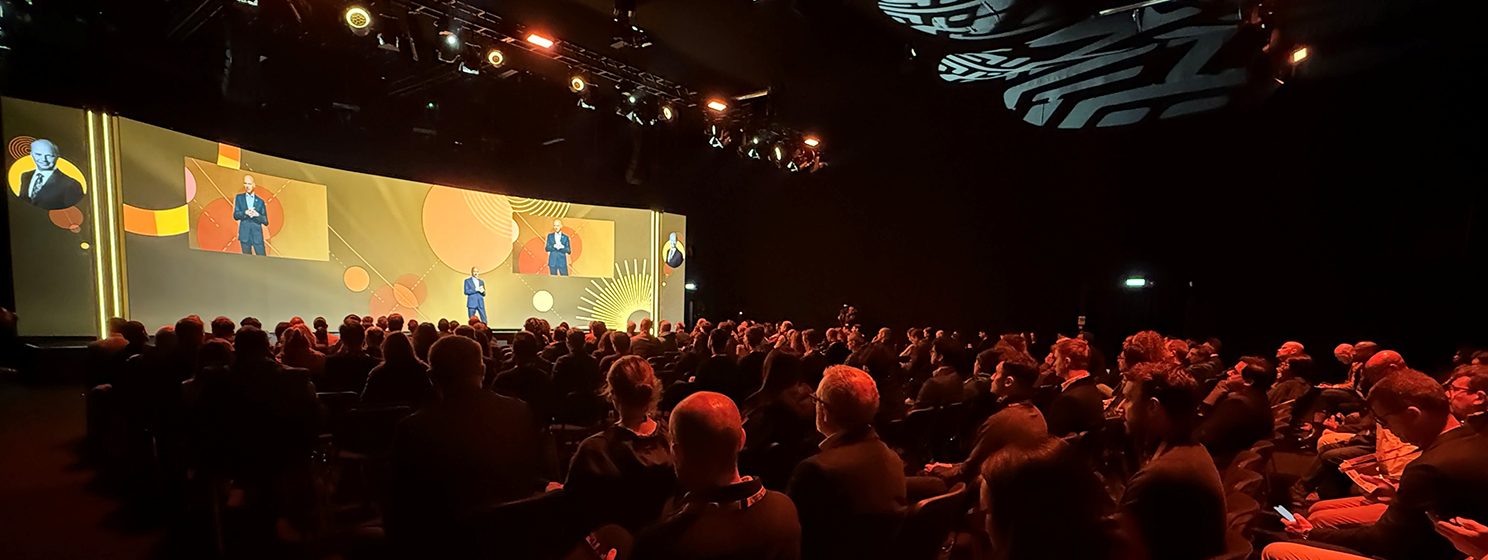|
Getting your Trinity Audio player ready...
|
London has always had a certain electricity when it comes to tech, but during the week of the London Blockchain Conference 2025, the tech energy in the city was clearly felt. Earlier that week, I had covered ZEBU Live, a high-energy gathering of startups, investors, and builders in the decentralized space. Building on that momentum, the London Blockchain Conference brought together an even broader mix of innovators, investors, and creators eager to shape the future of blockchain. Even a storm on Day 2 couldn’t dampen the city’s Web3 pulse. The energy was tangible, attendees connected, explored what’s new, got inspired, and chased the next wave of blockchain innovation.
This year’s London Blockchain Conference felt like the result of steady evolution, a conference that has truly found its identity. It’s now more focused and confident in its mission: championing enterprise blockchain while creating a welcoming space for Web3 enthusiasts, entrepreneurs, and even policymakers to connect and exchange ideas. But what really caught my eye was the venue itself. Set in the middle of Battersea Park, the organizers leaned into the location’s natural charm, bringing the outside in.
A portion of the floor was literally covered in real grass, the dining area looked like a picnic setup with wooden benches, and there were several food booths serving really yummy chows, a playful touch that made the space feel relaxed and social. It was one of the most creative layouts I’ve seen, an environment that encouraged conversations, not just presentations.
At the CoinGeek booth, we felt that energy firsthand. Many attendees stopped by to learn more about what we do, explore partnership opportunities, or simply have a chat about the state of blockchain. My colleagues Becky Liggero Fontana, Kurt Wuckert Jr., Jon Southurst, and I were constantly engaged, interviewing speakers, creators, and innovators throughout the two days.
And for me personally, every conversation circled back to one big question: What does the future of blockchain look like when it finally “just works”?

‘When blockchain just works’—my chat with Anthony Day of VeChain
One interesting conversation I had was with Anthony Day of VeChain, a company connecting blockchain to the real world since 2015.
Anthony explained that VeChain began by helping enterprises solve trust and data integrity challenges, verifying supply chains, ensuring authenticity, and maintaining transparency. Today, the focus has shifted.

“We’re enabling applications to reward people with crypto for making sustainable choices,” he said. “Then we tokenize those actions so they can be valued by companies and organizations.”
The shift from enterprise solutions to empowering individual action stood out. When I asked what blockchain would look like in 10 years, his answer was simple: invisible.
“With cloud computing, everyone uses it but nobody talks about it,” he explained. “Blockchain should be the same; it should just work.”
That insight stayed with me: the best technology is the kind you don’t even notice.
Talking blockchain Eevolution with CoinGeek’s own Jon Southurst
One of my favorite moments was interviewing my colleague Jon Southurst, someone who’s been covering Bitcoin and blockchain since the early days.

When I asked him how the narrative has changed, he laughed.
“In the early Bitcoin years, everyone privately speculated on price,” he said. “Publicly, it was all ‘this is the future of money!’”
Over time, he’s seen blockchain move from hype to utility. But even now, he noted, “There’s a lot of people who talk about blockchain, and I think they have no idea what it actually is.”
His take on the near future was spot-on: “A couple of years from now, no one will really be talking about blockchain as a concept. It’ll just be like the internet, part of everything.”
Southurst also believes tokenization will drive the next adoption wave. “Everything’s going to be tokenized,” he said, adding that real success will come when blockchain becomes “like water is to a fish”—something we use without even realizing it.
‘Making government invisible’—my conversation with Siim Sikkut of Digital Nation
When it comes to digital transformation, Siim Sikkut of Digital Nation brought a refreshing perspective. Estonia, often called the world’s most digital country, has been experimenting with blockchain long before it became a buzzword. This was especially interesting to me, having spent time covering the digitalization of the Philippines and the administration’s focus on advancing the country’s digital infrastructure, it was fascinating to hear how Estonia approached many of the same challenges and goals.
“Digital nation, like it’s done in Estonia, is the sum of many technologies,” Siim told me. “We started experimenting with blockchain before even the word was there.”
What really stood out was his focus on design and governance over technology. “The technology is the easy part,” he said. “The hard part is changing processes and managing transformation.”
Sikkut’s vision of an “invisible government” was both poetic and practical:
“If a baby is born, you don’t need to register him or her to have a GP, it’s automatically done in the back end. That’s invisible government. That’s seamless.”
To him, blockchain’s role is about trust, securing records, flagging unauthorized access, and ensuring integrity. But his eyes are already on the next challenge: trusted artificial intelligence (AI).
“A trusted digital government is one that uses AI that can be trusted,” he said. “That’s the next big test.”
‘When the blockchain gets quiet’—catching up with Brendan Lee
I also had the chance to reconnect with Brendan Lee, founder of Elas and one of the most insightful engineers in the space. We last spoke years ago at the first blockchain conference in the Philippines, and it’s inspiring to see how far his vision has come.
Lee talked about what it takes for blockchain to “run quietly in the background.” His answer: simplicity and scale.
“It really takes a blockchain with extremely low friction, low fees, few restrictions,” he said. “When we remove friction from the back end, the sounds of what people are building can grow much louder.”
He emphasized that BSV’s design, with its large data capacity and minimal costs, allows real-world applications to thrive. “We couldn’t find a competitor that was less than 500 times more expensive than BSV,” he told me.
For him, blockchain’s success isn’t about token price, but what’s built on top of it.
“If I can take one Satoshi worth one hundred thousandth of a cent but put a 10% share of a 100-million-dollar music catalog on it, what is that worth?” he asked.
His closing thought captured the collective mood of the conference:
“It’s always felt like it was just around the corner… but now, I feel like that corner has stopped moving. I can see it.”
Beyond panels and presentations: The real conversations
What struck me most about this year’s conference wasn’t just the content on stage; it was the conversations happening off it. Between park benches and booths, people were discussing regulation, stablecoins, and tokenization, but underneath it all was a shared desire for maturity. People are ready for blockchain to move beyond buzzwords and become the infrastructure quietly powering our digital lives.
Having covered blockchain for five years at CoinGeek, my focus has always been on the technology itself, understanding what it does, what it brings to the world, and highlighting the developments pushing it forward.

My goal has been to share insights so enterprises, governments, and individuals alike can explore blockchain’s potential and see how real-world adoption can unlock tangible benefits. From projects in Asia and Europe to pilots and initiatives around the globe, it’s all about showcasing how blockchain can deliver value and drive meaningful change.
For us at CoinGeek, the conference was also a reunion. Reporters from across the world, each covering different corners of the ecosystem, came together to compare notes, share insights, and reflect on how much the narrative has evolved.
In the end, that’s what the networking floor is really about, not just business cards and partnerships, but capturing the pulse of a community that’s building the future, one quiet, powerful block at a time.
Watch: How do you overcome fear when building a business?

 12-26-2025
12-26-2025 




